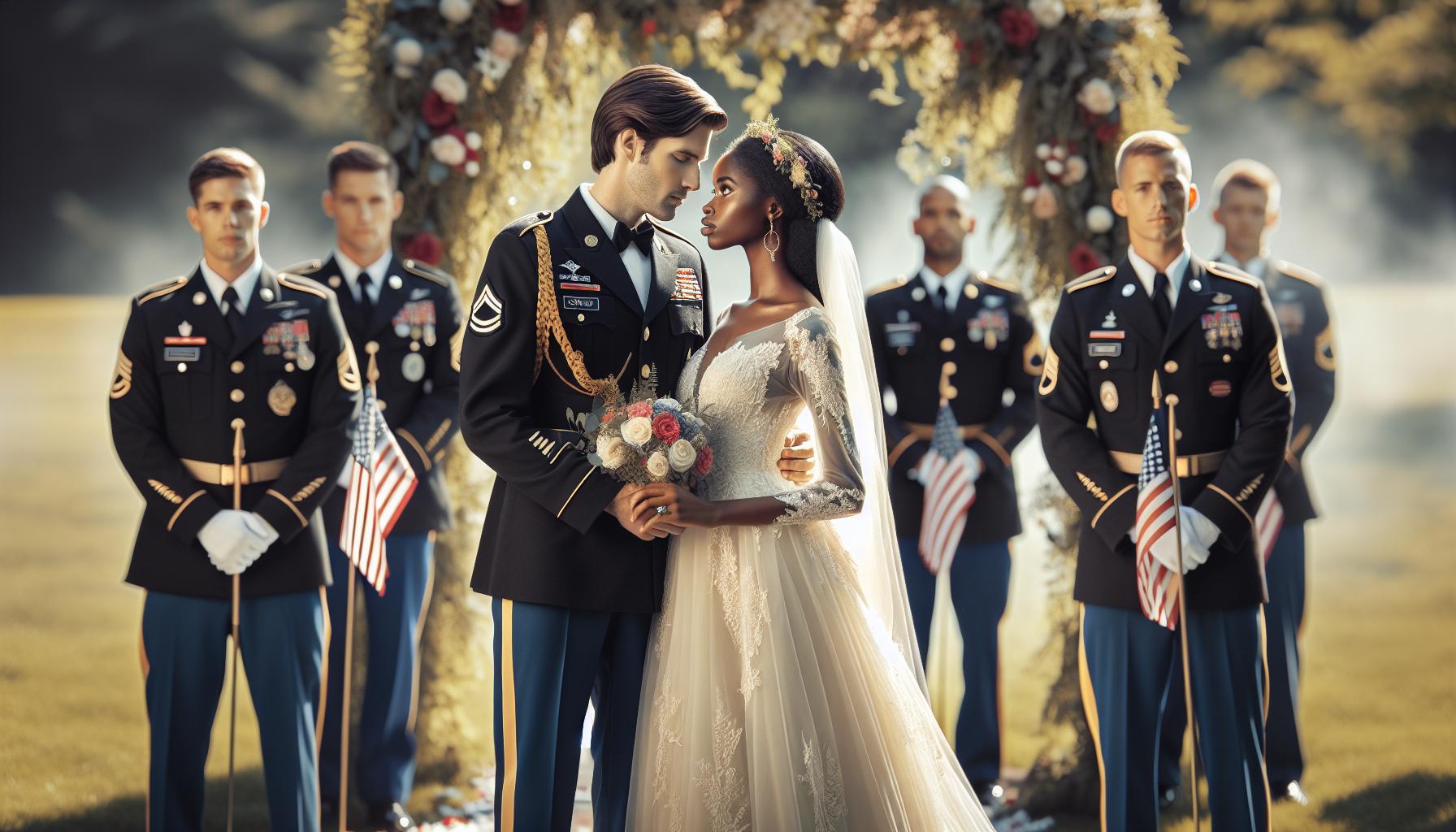Sending out wedding invitations may seem like a simple task, but timing is everything when it comes to ensuring your special day is unforgettable. Did you know that the ideal timeline for sending wedding invitations can significantly impact guest attendance and your overall celebration’s success? Understanding when to send these cherished papers is essential for creating anticipation and allowing your loved ones ample time to RSVP and make travel arrangements. In this guide, we’ll explore the optimal timeline for distributing your wedding invitations, addressing common concerns and goals that couples often face in the planning process. With the right timing, your guests will feel excited and honored to share in your celebration, setting the tone for a beautifully orchestrated event that reflects your unique love story.
How Far in Advance Should You Send Invitations?
Sending wedding invitations is an exciting moment in any couple’s wedding planning journey, but timing is everything! To ensure that your guests can save the date and make arrangements, it’s essential to send out your invitations with ample lead time. Ideally, invitations should be mailed out about 6 to 8 weeks before your wedding date, giving guests sufficient notice to adjust their schedules. For destination weddings, consider sending them even earlier-3 months in advance-to accommodate travel plans and ensure your loved ones can join in the celebration.
When planning your invitation timeline, keep in mind that many couples opt to send out save-the-date cards 6 to 12 months prior to their wedding. These cards are a perfect precursor to the formal invitation, especially for larger guest lists or weddings during peak seasons, allowing guests to book travel and accommodations well ahead of time. It’s all about creating a seamless experience for your guests who will want to be part of your special day.
Additionally, remember that life can be unpredictable. If your wedding falls on a holiday weekend or if many of your guests will need to take time off work, giving them extra time to plan will be greatly appreciated. Keeping communication clear and timely not only showcases your thoughtfulness as hosts but also enhances the excitement surrounding your upcoming nuptials, ensuring that everyone can participate in your momentous occasion.
Understanding the Wedding Invitation Timeline
Sending timelines for wedding invitations is crucial to creating a memorable experience for your guests. The excitement of your big day can often create a whirlwind of activity, but a structured timeline helps ensure that everything runs smoothly. Couples should consider mailing invitations 6 to 8 weeks before the wedding date. This time frame allows your guests to plan accordingly, ensuring they have enough time to make arrangements, especially if they are traveling from afar.
For destination weddings or occasions that necessitate travel and accommodations, it’s wise to send invitations even earlier-ideally 3 months in advance. This extended lead time helps your loved ones coordinate their plans around your special day without feeling rushed. Additionally, consider sending save-the-date cards 6 to 12 months prior. These initial notifications not only create excitement but also give guests the opportunity to block off their calendars well before the official invitation arrives.
Another important factor to consider is the potential for unforeseen events, such as holiday weekends or busy travel seasons. By providing ample notice, you show thoughtfulness and consideration for your guests’ ability to attend. The goal is to foster an inclusive atmosphere where your loved ones feel valued and appreciated, allowing them to share in the joy of your celebration. Clear and timely communication elevates the anticipation of your wedding, ensuring that those you cherish most can join you in making beautiful memories.
In summary, crafting a thoughtful invitation timeline is one of the key steps in your wedding planning journey, enabling you to focus on what truly matters-celebrating your love surrounded by family and friends.
Key Factors Influencing Your Invitation Schedule
Planning your wedding is a joyous endeavor, but it comes with a multitude of details that require careful consideration, particularly when it comes to the timing of sending invitations. The schedule for when to send out invitations can be influenced by several key factors that play into the overall planning process and will help ensure your celebration is flawlessly orchestrated.
One significant factor is the type of wedding you are planning. For intimate gatherings, you might find that a shorter timeline works well, as close family and friends are typically more flexible with their schedules. However, large or destination weddings require much earlier communication. Destination weddings should aim to send invitations at least three months in advance, allowing guests to arrange travel and accommodations without feeling rushed. Additionally, consider the season in which you are tying the knot; holidays or peak vacation times can complicate travel plans, meaning it’s wise to notify guests even sooner.
The length of your guest list may also heavily influence your invitation timeline. If you have a larger number of invitees, more time should be allocated for guests to respond and adjust their plans. With a varied guest list, particularly including those from out of town, sending out invitations earlier not only provides necessary logistics but also conveys that you value their presence. This is an essential consideration to keep everyone informed and engaged in your wedding festivities.
Moreover, the role of save-the-date cards can’t be overstated. Sending these cards 6 to 12 months in advance enables guests to get a jump start on their plans. This is especially crucial for weddings during busy seasons, as you want to minimize the risk of double-booking among those you cherish most. To elevate the excitement, these creative notifications signal to your loved ones that something special is on the horizon.
In the whirlwind of wedding planning, all these elements must work harmoniously. Take the time to consider your unique circumstances, such as venue availability, your chosen date, and the dynamics of your guest list, as these will help inform your ideal invitation schedule. Through clear communication and mindful planning, you can ensure every guest feels welcomed and excited to celebrate with you on your special day.
Timing for Different Types of Weddings
Planning a wedding is a beautifully unique journey for each couple, and the timing of your invitations plays a critical role in setting the stage for your big day. Understanding the optimal timeline for sending invitations can alleviate stress and ensure your guests are well-prepared to celebrate with you. Factors like the style of your wedding and the overall guest experience greatly influence when to send out those all-important invites.
Intimate weddings with a smaller guest list can often allow for more flexibility. You might choose to send invitations about six to eight weeks in advance, giving your nearest and dearest ample time to adjust their schedules. These smaller gatherings are often attended by family and close friends who usually have the ability to make last-minute arrangements. On the other hand, larger celebrations, particularly those that require substantial travel-like destination weddings-should consider sending invitations a minimum of three to four months ahead of the event. This timeframe accommodates travel logistics and hotel bookings, ensuring that your guests can secure their plans without feeling rushed.
The theme and formality of your wedding also play an important role in your invitation schedule. For example, casual outdoor weddings might afford a more relaxed timeline, while meticulously planned formal affairs typically benefit from advanced notice. Consider providing your guests with save-the-date cards six to twelve months prior, especially if your wedding falls during peak seasons or around major holidays. This gives everyone a heads-up to keep your special date free on their calendars, allowing you to radiate excitement and provide a clear path for guests to join in on the festivities.
As you map out your invitation timeline, think about the blend of logistics and joy that will guide your planning. Whether gathering your closest friends in a cozy backyard or hosting a grand reception in a stunning venue, ensuring your invitations align with the nature of your celebration will help create a seamless and memorable experience for you and your guests. Ultimately, thoughtful timing in sending out wedding invitations not only reflects your commitment to your loved ones but also enhances the anticipation surrounding your day, allowing everyone to fully embrace the love and joy of your union.
Deciding on Guest List Size and Its Impact
The size of your guest list plays a pivotal role in determining how far in advance you should send out wedding invitations. A smaller, more intimate gathering can offer a relaxed atmosphere, where close family and friends tend to have the flexibility to adjust their schedules. For these gatherings, sending invitations about six to eight weeks prior can be perfectly adequate, allowing your guests to clear their calendars without feeling overwhelmed. However, if your dream wedding involves a larger guest list with several attendees traveling from afar, it’s essential to start early. Aim to send invitations at least three to four months in advance to provide ample time for travel arrangements and accommodations.
As you craft your guest list, consider the following factors that influence how your invitation timeline will pan out:
- Travel Logistics: Guests commuting from long distances may require more time to plan, so early invitations are crucial.
- Accommodations: Providing sufficient notice lets guests book hotels or make housing arrangements before they fill up, especially during peak wedding seasons.
- Dietary Restrictions: A larger guest list often means the need for more complex meal planning. Early RSVPs allow your caterer the time to accommodate special dietary needs.
- Guest Priorities: More guests can mean varied priorities; sending invitations early allows everyone to ensure they make your wedding a priority among other commitments.
Also, the emotional landscape of a wedding can be enriched through the presence of close people. When you discuss potential guests, think about who you truly want to share this moment with, and consider how their involvement affects your invitation timeline. Couples often desire to include extended family or longtime friends, and knowing your guest list size can help further dictate when to send those invitations out, as you ensure that these relationships are honored and cherished.
Understanding how guest list size impacts your invitation timeline is not just about logistics; it’s about creating an unforgettable experience that resonates at a profound level with everyone you invite. By laying the groundwork well in advance, you’re not only facilitating your guests’ attendance but also cultivating a shared excitement and anticipation for your special day.
The Role of Save-the-Dates in Planning
Sending Save-the-Dates is a fantastic way to kick off the excitement of your wedding and ensure your guests are informed well in advance. These charming early announcements serve as a prelude to your formal invitations, giving loved ones a heads-up about your wedding date and helping them prioritize it in their calendars. Especially for weddings that involve out-of-town guests or peak seasons, sending Save-the-Dates allows everyone to plan their travel accordingly and reduces the risk of scheduling conflicts.
When organizing your Save-the-Dates, aim to send them out around six months prior to your wedding date. This timeframe strikes a balance; it’s early enough for guests to secure time off work, make travel arrangements, and even book accommodations if they’re coming from afar. You might also consider sending them even earlier (up to a year ahead) if you’re hosting a destination wedding or if your celebration is during a busy time, such as holidays or summer months.
To create memorable Save-the-Dates, incorporate elements that reflect your personal style as a couple. Whether it’s a beautiful photo, a unique design that ties into your wedding theme, or a personal note about what your guests can expect, these touches will make the announcement special. Keep in mind that while Save-the-Dates are typically less formal than invitations, they should still include essential details such as the wedding date, location (if known), and a note indicating that an invitation will follow.
Lastly, be mindful of your invitation timeline when sending Save-the-Dates. By doing this, you not only prepare your guests but also set a positive tone for the wedding planning journey. This early communication ensures that your loved ones share in your joyful anticipation, ultimately making your wedding celebration even more meaningful.
How to Align Invitations with Other Wedding Activities
Aligning your wedding invitations with other activities in the planning process is essential for a smooth and joyous lead-up to your big day. Proper timing ensures that guests receive clear information, allowing them to plan for your celebration without confusion or overlap with other commitments. Consider the key milestones, such as your venue selection, catering finalization, and any pre-wedding events like bridal showers or rehearsal dinners, when setting your invitation timeline.
A good approach is to map out your wedding activities on a timeline. For instance, once you have secured your venue, you can solidify your wedding date. This is the ideal moment to send out your Save-the-Dates, typically six to twelve months in advance, especially if your wedding falls during peak seasons or involves destination arrangements. Following the Save-the-Dates, schedule your invitations to be mailed out around eight to ten weeks before the wedding. This timeframe not only accommodates RSVP needs but also allows guests to coordinate travel or time off if necessary.
Coordinate with Pre-Wedding Events
For any pre-wedding events such as bridal showers or bachelorette parties, communicate these details alongside your invitations when possible. You may include notes or inserts that inform guests about these celebrations, ensuring they feel part of every step of your journey. Be mindful to share the essential details-dates, locations, and any special themes-so that your loved ones can plan accordingly. This cohesive communication helps in minimizing conflicts and encourages a shared excitement for the festivities ahead.
Stay Flexible and Open to Changes
It’s crucial to remain open to adjustments as you progress through the planning stages. Last-minute changes can happen, whether it’s a vendor adjusting their timing or an unexpected family commitment. If changes arise that impact your guest list or event details, communicate swiftly and clearly with your guests. Timely updates can include revised invitation designs, follow-up emails, or even a wedding website, which can serve as a dynamic resource for your guests regarding all wedding-related activities.
By thoughtfully aligning your invitations with your wedding activities, you cultivate an atmosphere of anticipation and inclusion, ultimately adding to the joy of your wedding planning journey. Let every element-from the invitation to the final send-off-reflect the love and excitement surrounding the celebration.
Common Mistakes to Avoid When Sending Invitations
Sending out invitations can be one of the most delightful yet daunting tasks in wedding planning. Missteps in this crucial phase can lead to confusion for your guests or even affect your overall wedding day experience. Here are some common mistakes that many couples make when sending their invitations, along with tips on how to avoid them.
One frequent error is sending invitations too late, which can leave guests scrambling for schedules and accommodations. Ideally, aim to send invitations 8-10 weeks prior to your wedding, but if you’re hosting a destination wedding or if many of your guests will need to travel, consider mailing them even earlier, at about three months in advance. This not only gives your friends and family enough time to prepare but also alleviates stress for you as you manage other wedding details.
Another pitfall is overlooking the power of clear communication. Couples often forget to include essential information, such as the dress code, RSVP details, or schedule of events. To avoid this, create a checklist of key details that should be on the invitation, ensuring it covers everything your guests need to know. For instance, if your wedding involves multiple venues or requires specific attire, be explicit in your wording to prevent any guesswork on their part.
Failing to proofread is also a common mistake that can lead to awkward situations. You might be overwhelmed by the myriad tasks ahead of the big day, but sending out invitations with typos or incorrect details can create confusion and frustration. Before finalizing your invitations, have a trusted friend or family member review everything. Consider creating a digital version of the invite to double-check presentation and legibility before printing.
Another crucial aspect to keep in mind is managing your guest list effectively. Many couples struggle with the balance of inviting close friends and accommodating family expectations. Familiarize yourself with your venue capacity and assess your budget to determine a feasible guest list size. Inviting too many people beyond your budget or space can lead to difficulties in managing RSVPs and, ultimately, the experience at the ceremony itself.
By steering clear of these common pitfalls, you pave the way for a joyous and well-organized invitation process, allowing you to focus on the love and excitement of your upcoming celebration. Embrace this phase of wedding planning, knowing you’re laying down the groundwork for the memories to come!
Cultural Considerations in Wedding Invitations
Every couple brings their unique heritage and customs into their wedding celebrations, influencing many aspects, including invitations. Recognizing and respecting these cultural considerations can enrich the celebration and create a more meaningful experience for both you and your guests. For instance, in many cultures, the timing for sending out invitations can differ significantly. Some traditions may advocate for sending invitations as early as six months in advance, allowing guests ample time to make travel arrangements, particularly for those traveling internationally. Understanding these nuances can help you navigate the invitation timeline thoughtfully.
In addition to timing, the language and format of your invitations often carry cultural significance. For example, traditional invitations for formal weddings might incorporate specific wording that reflects familial lineage or religious traditions. Considerations such as whether to include both parents’ names, mention of any religious ceremonies, or using a multilingual approach to accommodate diverse guests can all play pivotal roles in crafting the perfect invitation. This attention to detail not only conveys respect for each guest’s background but also sets the tone for the entire celebration.
It’s also essential to contemplate RSVP practices that may vary across cultures. In some communities, guests may expect to respond verbally or through a different medium other than mail, while others may follow the more common written RSVP. Clarifying your expectations within the invitation can ensure that the planning process remains smooth. You might include a note explaining how you would like guests to respond, fostering a clear communication channel that honors everyone’s traditions.
Overall, thoughtful cultural considerations in your wedding invitations create an inclusive environment, enriching the experience for everyone involved. By acknowledging these elements, you add depth and meaning to your celebration, transforming a simple invitation into a cherished keepsake that reflects your journey as a couple and the unity of both families.
Tips for Planning Destination Wedding Invites
Planning a destination wedding is an exciting adventure filled with romance and opportunity, but it also comes with unique challenges-particularly when it comes to sending invitations. Timing is paramount, as your guests will need ample notice to plan for travel and accommodation. Generally, it’s advisable to send out destination wedding invitations at least six to eight months in advance. This extended timeline not only gives your guests plenty of time to make arrangements but also allows you to manage responses effectively.
Essential Steps for Sending Invitations
- Include Travel Information: Your invitations should provide essential details about the destination, such as nearby airports, hotel accommodations, and local attractions. This is especially important for guests who may not be familiar with the area. Consider creating a wedding website that compiles this information, allowing guests to access updates easily.
- Craft Beautiful Save-the-Dates: Since destination weddings often require more planning from guests, send out Save-the-Date cards as soon as your venue is booked. This gives guests early notice and helps them start coordinating their travel plans alongside their RSVPs.
- Consider Group Rates: Liaise with hotels in your wedding destination to secure group rates for your guests. Including this information in your invitations can make attending your wedding more feasible and comfortable for everyone.
- Follow Up with RSVPs: Managing RSVPs for a destination wedding may involve additional layers of complexity. Consider using an online RSVP tool that allows guests to respond conveniently. Clearly state your RSVP deadline in the invitation to encourage prompt replies, ideally two to three months before the wedding date.
Final Touches for Invitations
As your big day approaches, maintaining clear communication is key. Personalized touches, such as heartfelt notes or special travel-themed designs, can elevate your invitations and express your excitement for your guests. Additionally, be sure to consider the postage time, as sending invitations internationally may require more time than domestic mail. Allow a few extra days for printing and mailing to ensure they arrive on time.
With meticulous planning and thoughtful details, your destination wedding invitations can set the perfect tone for a celebration that you and your loved ones will cherish forever.
Managing RSVP Dates with Your Timeline
When planning a wedding, managing RSVP dates is a critical step that can streamline your preparations and foster a joyous celebration. Deliberating thoughtfully on when to request responses will not only help you finalize your guest list but also alleviate stress as your big day approaches. As a general rule of thumb, set your RSVP deadline for two to three weeks before the wedding date. This timeframe grants you adequate time to calculate seating arrangements, catering needs, and any other logistical elements that depend on your final guest count.
For destination weddings, where attendees might need to coordinate travel and accommodations, consider extending your RSVP window. Inform your guests early on that their responses are crucial, especially when securing group rates at hotels or organizing transportation. Utilize elegant RSVP cards that match your invitation style, and include clear instructions on how and when guests should respond. Encourage them to send their responses promptly, perhaps with a direct note or communication hint, which adds an extra layer of personalization and connection to your joyously unfolding journey.
Additionally, harness modern tools to simplify this process. Online RSVP platforms can be particularly effective, allowing guests to respond effortlessly at their convenience. This can significantly reduce the number of follow-up calls you might need to make, ensuring that you have all necessary confirmations well in advance. As you create this sense of urgency, remember to be warm and inviting in your approach; a little enthusiasm can go a long way in encouraging your loved ones to join your celebration.
In crafting a timeline, align your RSVP requests with the various phases of your wedding planning. The more cohesive and clear your communication, the more seamless the entire experience will be for both you and your attendees. Celebrate not just the building excitement of the day but also the precious moments shared with family and friends as you prepare for this beautiful journey of love.
Printing and Postage: Allowing Time for Delivery
When it comes to the magical touch of sending out wedding invitations, timing isn’t just important-it’s essential! Proper planning for printing and postage ensures that your heartfelt invitations arrive on time, reflecting the excitement and joy of your forthcoming celebration. It’s not merely about designing beautiful invites; it’s also about making sure they reach your guests well ahead of your special day.
Start by placing your order for printed invitations about two to three months before your wedding date. This timeline allows for any necessary revisions or adjustments after you review the printed proofs. If you’re opting for custom designs, which can take longer to finalize, consider initiating this process even earlier. Once printed, factor in time for addressing and mailing-an estimated two to three weeks should suffice for this process, particularly if you’re handling all the addressing by hand, which adds a personal touch but can be time-consuming.
Postage Considerations: When it comes to sending your invitations, don’t forget the importance of postage. Weigh your envelopes to determine the correct postage, especially if you’re including additional items like RSVP cards, maps, or accommodations details. It’s wise to visit your local post office for accurate pricing. For added ease, purchase enough stamps to account for any potential weight variations and ensure your guests receive their invitations without delay.
While planning, keep in mind the post office’s delivery times as well. If you’re sending invitations across the country or internationally, allow an extra week or two for delivery. Also, consider sending out save-the-date cards a bit earlier, especially for destination weddings, to give guests ample time to plan their travel. This thoughtful touch not only builds anticipation but also ensures your loved ones can be part of your beautiful journey. By allowing adequate time for printing and postage, you create a seamless flow in your wedding planning that enhances the joy and celebration of your special day!
Q&A
Q: How many months before the wedding should you send invitations?
A: You should ideally send wedding invitations 6 to 8 weeks before the wedding date. This timeframe allows couples to finalize details while giving guests ample time to arrange their travel and accommodations if necessary. For destination weddings, consider sending them 3 months in advance.
Q: What is the difference between “Save-the-Date” and the formal invitation?
A: “Save-the-Date” notices are usually sent 6 to 12 months before the wedding. They serve to notify guests of the upcoming event, while formal invitations provide all the essential details, like date, time, and location, sent 6 to 8 weeks prior.
Q: What should I do if I missed the invitation timeline?
A: If you miss the standard timeline, send invitations as soon as possible and communicate directly with guests, explaining any delays. It’s important to follow up to ensure they received the details and can respond.
Q: Should I hand-deliver invitations for a local wedding?
A: Hand-delivering invitations can be a personal touch for a local wedding, especially for close friends and family. However, consider postage to ensure everyone receives their invitation on time, particularly if you’re on a tight schedule.
Q: Can I send digital invitations instead of printed ones?
A: Yes, digital invitations are acceptable and can be sent as early as 8 weeks before the wedding. However, ensure your guests are comfortable with this format, and check if it aligns with your wedding’s formality.
Q: How far in advance should I plan my guest list for invitations?
A: Start compiling your guest list early, ideally 6 months before sending invitations. This gives you time to finalize numbers and manage invitees, especially if you need to accommodate any venue restrictions.
Q: How do cultural factors affect the timeline for sending invitations?
A: Different cultures have specific customs regarding invitations and timelines. Research your cultural norms to ensure appropriate timing and etiquette, which can also influence your guest list and overall wedding planning.
Q: What factors can influence the timing of sending wedding invitations?
A: Factors include the size of your guest list, wedding type (destination, local, informal, etc.), and any specific cultural traditions. Each element may require adjustments to the sending timeline for an organized experience.
Future Outlook
As you finalize your wedding planning, remember that sending your invitations well in advance is key to ensuring your guests can join in your special day. Whether you’re considering formal invitations or creative save-the-dates, planning ahead can relieve stress and enhance your celebration experience. If you want to explore stunning customizable options, check out platforms like Etsy for unique designs or Vistaprint for budget-friendly choices.
Don’t forget to dive into our comprehensive guides on wedding etiquette and planning essentials to help you navigate attire selection and vendor coordination seamlessly. For those curious about ideal timelines and traditions, discovering how to balance modern styles with classic customs will make your planning journey even more enjoyable. Join our community by signing up for our newsletter to receive the latest tips and inspiration! Your dream wedding awaits, so let’s make each step memorable together.











